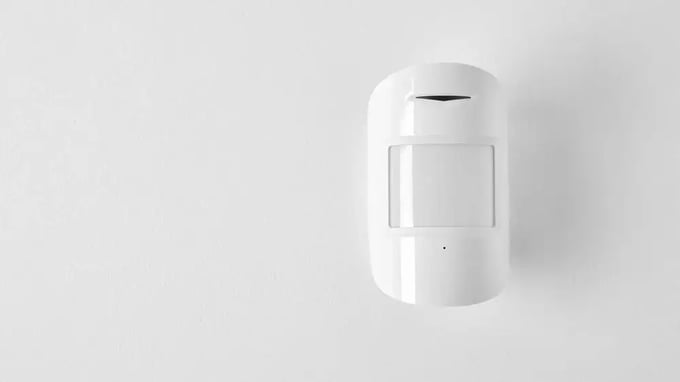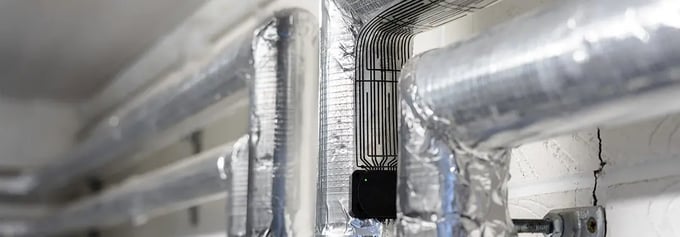Smart buildings have come a long way since Mark Honeywell unveiled the first programmable thermostat back in 1906. Today, smart building technology has advanced considerably. It now covers security, emergency and energy management, in addition to temperature controls and water heating systems.
Advanced building technology includes automation and telecommunication systems. These systems can control heating, ventilation, air conditioning, lighting, security, and other user-centered functions. Examples include way-finding and conference room scheduling.
The Internet of Things (IoT) and IoT devices have revolutionized the built environment and even the smart city. This is due to the smart building's promise of a high level of connectivity.
Smart technology will transform commercial buildings. These buildings will become more like living organisms. They will have intelligent connected networks powered by adaptable interfaces and software.
According to a study from Fortune Business Insights, the smart building market value is expected to reach US$109.48B by 2026.
LAIIER's Surface to Cloud technology is directly addressing the market. Our services and products give global industrial partners and business owners the power to create smart surface solutions. These solutions can be integrated into floors, walls, and furniture as they are constructed.
Our printed electronics technology has the power to transform passive surfaces. These surfaces can become smart active interfaces that serve specific use cases. Additionally, data can be derived from the built environment.

Why do we need smart buildings?
Governments are setting environmental targets to reduce carbon emissions and improve energy management. Building owners are recognizing the value of smart technology in managing energy consumption and efficiency. This applies to both residential and commercial buildings.
Organizations are looking for ways to increase staff wellness, productivity, and building operations. They are also attempting to support sustainability efforts and improve decision-making through data. Smart building technology is the answer to all of these goals.
The benefits of smart buildings
Smart building solutions have the potential to offer benefits far beyond energy efficiency. Imagine working in a building that is aware of your preferences for light and temperature. It can automatically turn systems on or off depending on occupancy. Additionally, it can monitor and report cleaning events or water leaks to the building management system.
In the future, buildings will be able to do this and much more. They will make occupants safer and more productive through occupancy monitoring, hygienic surfaces and streamlined interfaces.
Building owners and operators can save money by streamlining operational, tenant, security and performance management. Additionally, asset reliability can be improved. All of this, while lowering energy usage and reducing environmental impact.
Smart building automation systems have many advantages. These include real-time monitoring reports and communications, data and analytics, fault detection, remote control and adjustment, and proactive equipment testing. Industry leaders are aware of the groundbreaking potential of IoT technology for smart buildings. They are searching for firms and technologies that can help them create an integrated smart building solution.
LAIIER works to meet these needs by developing intelligent building solutions that integrate into building management systems. Our LoRaWAN water leak detection and liquid level sensing technology can benefit businesses in many ways. It can lower operating costs, increase efficiency, and reduce damage. Additionally, it can create extraordinary interfaces for building occupants.

Smart building technology
Smart building systems now use a variety of technologies, materials, and products. This allows for different results and Internet of Things applications. Some are active, and others are passive. Some examples include:
- LED lighting to reduce energy consumption.
- Air monitoring systems to monitor air quality.
- Motion detectors to conserve energy.
- Sensors to monitor occupancy.
- Photovoltaic panels to gather energy.
- Solar water heating systems to reduce energy costs.
- Electrochromic windows to reduce energy cost.
- >Automated skylights to improve energy efficiency.
- Living walls to enhance air quality.
- Ultra-low flow and flush plumbing fixtures to conserve water.
At LAIIER, we develop smart building sensors using capacitive sensing technology. We focus on building intelligence into floors and walls during manufacturing. This provides integrated, scalable, and cost-effective solutions for smart buildings.
Our solution provides real-time data on sensor usage. This data can help improve efficiency. It can also be used to monitor events.
Leak detection
We can monitor water leaks and high moisture content in real-time by fitting thin, discrete water leak sensors into floors. This is known as incorporating or retrofitting.
Our Severn WLD sensors are connected to a smart building's automation system. They are able to detect even small volumes, such as a droplet.
By detecting the leak early, potential damage can be prevented. This is because the system is alerted before the leak turns into a flood.

Technology is advancing. IoT sensors and connected devices are becoming more common. This leads to the emergence of smart buildings, which will increasingly incorporate both active and passive technology.
Smart technology will enable building occupants to arrive at work and have temperature, furniture, and lighting automatically adjusted to their preferences. Facility managers can use data from the environment to maximize efficiency.
We're thrilled to be part of the smart building revolution. It makes sense economically and from a design point of view.
Living in an intelligent and interconnected world will benefit us in many ways. It will save us money and help the environment. Most importantly, it will enhance our daily lives.